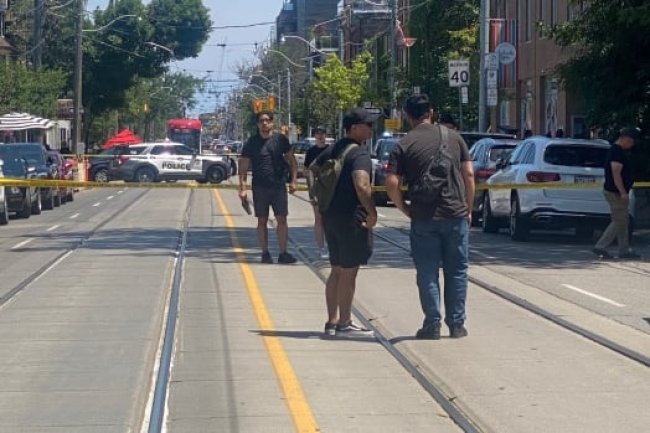Here's how OPP ID'd the 'Nation River Lady'
Following the positive identification of Langford's remains in 2020, surviving relatives in Tennessee replaced a grave marker reading 'Missing, but not forgotten' with this one. (Denis Babin/Radio-Canada)Ontario Provincial Police (OPP) have shared further details of how investigators finally identified the remains of the woman who came to be known as the Nation River Lady, decades after she disappeared.OPP said they first identified the remains as Jewell Parchman Langford, as reported by CBC/Radio-Canada Tuesday, back in 2020 after a successful DNA profile match using forensic genealogy. It's believed to be the first case in Canada where remains were identified using this method. One of Canada's best-known cold cases, Langford's remains were discovered floating in the Nation River in May 1975 after being dropped from a bridge on Highway 417 near Casselman, Ont., between Ottawa and Montreal. Langford, who investigators say had travelled to Montreal from her home in Tennessee shortly bef


Ontario Provincial Police (OPP) have shared further details of how investigators finally identified the remains of the woman who came to be known as the Nation River Lady, decades after she disappeared.
OPP said they first identified the remains as Jewell Parchman Langford, as reported by CBC/Radio-Canada Tuesday, back in 2020 after a successful DNA profile match using forensic genealogy. It's believed to be the first case in Canada where remains were identified using this method.
One of Canada's best-known cold cases, Langford's remains were discovered floating in the Nation River in May 1975 after being dropped from a bridge on Highway 417 near Casselman, Ont., between Ottawa and Montreal.
Langford, who investigators say had travelled to Montreal from her home in Tennessee shortly before her family reported her missing, was 48 at the time of her death.

Langford was a beloved member of the community, her family told police. She was the co-owner of a successful health spa business with her ex-husband, and was the chair and president of the local chapter of the American Business Women's Association.
Dirk Huyer, chief coroner for Ontario, said for decades, Langford's family had no idea where she was or what had happened to her.
"Sadly, we do now know, and we know, tragically, it was not the outcome that they were hoping for," he said.
Limited forensic technology
Over the years, the coroner's office worked alongside OPP and members of the Centre of Forensic Sciences to identify the remains, but Huyer said the "many different efforts and attempts" were based on the limited forensic methods available at the time.
A forensic dentist was able to identify what was described as a "very unique dental appliance" that was then photographed and shared through a dentistry publication, but that also failed to turn up any new leads.

In late 2019, OPP, in consultation with the chief coroner and members of Centre of Forensic Sciences, exhumed the remains and obtained a new DNA profile.
"With the evolving and the progressing DNA science, we did make a decision to obtain a new DNA profile based upon the new technology and new science that was available," Huyer said.
Fresh DNA profile yields results
Despite the decades that had already passed, Huyer said a "very effective and clear" DNA profile was able to be isolated and developed.
That sample was then shared with a U.S.-based organization called the DNA Doe Project, which works with law enforcement to conduct DNA evaluations through genetic genealogy, or the process of creating family tree records with the use of DNA test results.
Bryan Worters, a volunteer investigative genetic genealogist with the DNA Doe Project, said OPP contacted the project in 2019. By 2020, he said, the project had developed a DNA kit and uploaded it to a public database.
"The DNA sample was linked with others through a genealogy and family tree analysis and raised a good potential that the unidentified remains were Miss Langford," Huyer said.
At this point, investigators met with surviving relatives — many of them Langford's nieces — to obtain DNA samples from within the family.
Those samples were brought back to the Centre of Forensic Sciences in Toronto, and the identification was confirmed.

The news was then shared with Langford's family, Huyer said.
"It was a very tough and moving meeting, but one I think that the family finally had information to allow them to have some resolution to the tragic loss of their loved one," he said.
With Langford's identity confirmed, a lengthy investigation ensued involving the coroner's office, OPP, Montreal police, the FBI and the Canadian and U.S. justice departments.
Rodney Nichols, 81, has been charged with murder. He is now residing in Florida, where he is the subject of an extradition request.
What's Your Reaction?























